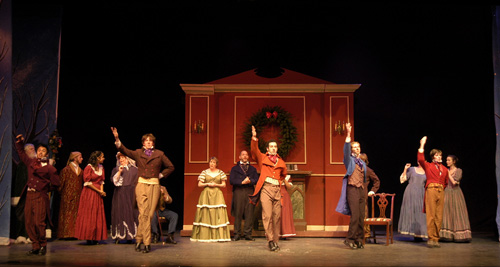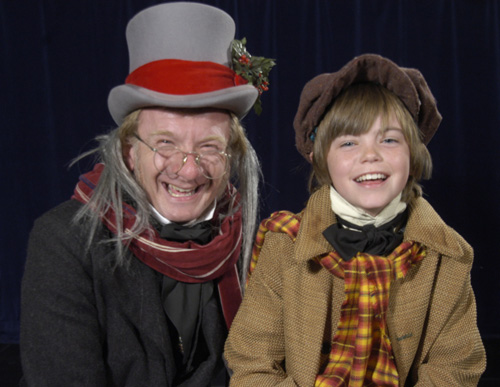
Q: Did your previous experiences playing the role of Bob Cratchit affect the way you are now portraying the role of Scrooge?
A: Having played Bob Cratchit in the past four Charleston Stage productions of A Christmas Carol has certainly given me some insight into taking on the role of Ebenezer Scrooge. The relationship between the two characters neatly summarizes the message behind the story. Scrooge, though materially wealthy, lacks any warmth or tenderness in his relationships. The most important thing in his life is gain. Cratchit is very poor, but love of family is what is important to Bob. Through the agents of the spirits, Scrooge comes to understand that lesson. As Scrooge, I can see what Ebenezer is missing, because I’ve been in Cratchit’s shoes. Cratchit, at home, is surrounded by loving family: a wife and lots of children. Scrooge’s only companions are paid servants or ghosts! Some of the scenes I do on a bare stage certainly make me miss all of those kids!
Portraying this iconic role is a thrill, and more than a little scary. After all, this is a role that has been played by Alastair Sim, George C. Scott, Patrick Stewart, and many others. I’ve watched four terrific actors play Scrooge at Charleston Stage and each has brought something different to the part. I hope to add my own take on the role and make this a memorable production.









